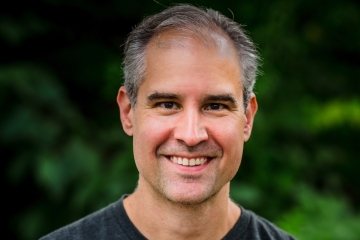Education officials across America continue to make dumb decisions in the name of equity. This folly needs to stop.
Don’t worry, this is not another conservative screed blasting “equity” as opposed to “equality.” To be sure, I sympathize with those on the right who detest the drive for “equality of outcomes”—which “equity” has come to mean for some. Regrettably, that construction conjures the specter of race preferences in college admissions and hiring; redistribution of resources via a welfare state; and a doubling-down on identity politics.
But as an O.G. education reformer, I’m comfortable with “equality of outcomes” in some circumstances. After all, the whole point of No Child Left Behind and similar policies was to narrow the achievement gap. (Look at its first page: “An Act to close the achievement gap with accountability, flexibility, and choice, so that no child is left behind.”) We should be angry that achievement scores, graduation rates, college completion, and every other educational indicator are still so highly correlated with race and class, and we should continue to work to change that fact of American life.
In other words, I respect the equity impulse, the desire to bend our system toward the needs of our most disadvantaged students—students who are disproportionately poor, Black, and Brown.
But there’s a right way and a wrong way to go about this. Leveling up is the right way. Leveling down is the wrong way. Expanding access and opportunity is the right way. Lowering standards is the wrong way.
Guess which way is gaining steam?
Let’s look at a few recent examples:
In each of these cases, public education leaders are trying to take the easy way out.
Start with mounting hostility to honors courses and other opportunities for advanced learning. There’s no doubt that Black, Brown, and low-income students are underrepresented in such classes, which is no surprise given the achievement gap that is apparent all the way back to kindergarten. Diversifying these classes is an important goal, and one that takes hard work. It means finding academically talented kids from underrepresented groups as early as possible—as in grades K–2—and nurturing their talents with robust “gifted and talented” programs, grade-skipping, after school enrichment—whatever it takes to help students stay on an advanced track. (No, we’re not good at this.) It also means looking for students—again, as early as possible—who may not yet test well but have the potential to be academic high-flyers with the right support.
Or districts can just get rid of honors courses.
The same thing goes for homework. Yes, it’s hard for some kids to do homework at home, given lackluster internet connections, unstable families, crowded homes, and so on. But there are obvious, age-old solutions, such as keeping schools open in the afternoon or building study halls into the school day. These could be staffed by teachers or aides and powered by schools’ robust internet access, so kids can do their homework at school—or at the Y or even in a church social hall—and get help from caring adults. But that takes finding the money, managing logistics, and convincing some adults to take on new roles or stay late.
So let’s just ban homework instead.
Likewise, with discipline. Racial disparities in suspensions and expulsions are similar in size to achievement gaps—not surprising since both stem from the same underlying cause: vastly different socio-economic circumstances. It makes sense to try to find more effective ways to correct student misbehavior than giving offenders a vacation from school. But again, there are no easy answers. Many misbehaving students need significant mental health supports, such as regular and intensive cognitive-behavioral therapy. The most violent children and teenagers need alternative placements, to keep themselves and others safe. These are challenging issues, which can bring great cost and controversy.
So instead let’s just tell teachers that they can no long send misbehaving students to the principal’s office.
Excellence is the answer
The easy-way-out approach to equity is a form of mediocrity. It’s like a high school football team that only runs the ball because it doesn’t have the skill to put together an effective pass offense. And mediocrity—not excellence—is the enemy of equity. As I wrote recently, excellence is the antidote to inequality—excellent teaching, excellent classroom management, excellent implementation, and a culture of excellence and high expectations.
Nor do the equity shortcuts work. Ban honors classes, and affluent tiger moms (of all races) will find advanced learning opportunities for their kiddos outside of school or bolt for private schools. Outlaw homework, and those same tiger moms will make their kids do Kumon or Khan Academy. Turn schools into unruly dystopias, and watch anyone with means escape the sinking ship.
And at the end of all of that, guess who suffers? The poor, Black, and Brown students that equity warriors supposedly worry about.
No more shortcuts. No more idiocy. Equity is not a good reason to lower standards—in academics, grading, homework, or discipline. There is no good reason to do those things—and none of them, in the end, advances equity.
Editor’s note: This was also published as an article in an edition of “Advance,” a newsletter from the Thomas B. Fordham Institute edited by Brandon Wright, our Editorial Director, and published every other week. Its purpose is to monitor the progress of advanced education (a.k.a. “gifted” education) in America, including legal and legislative developments, policy and leadership changes, emerging research, grassroots efforts, and more. You can subscribe on the Fordham Institute website and the newsletter’s Substack.








